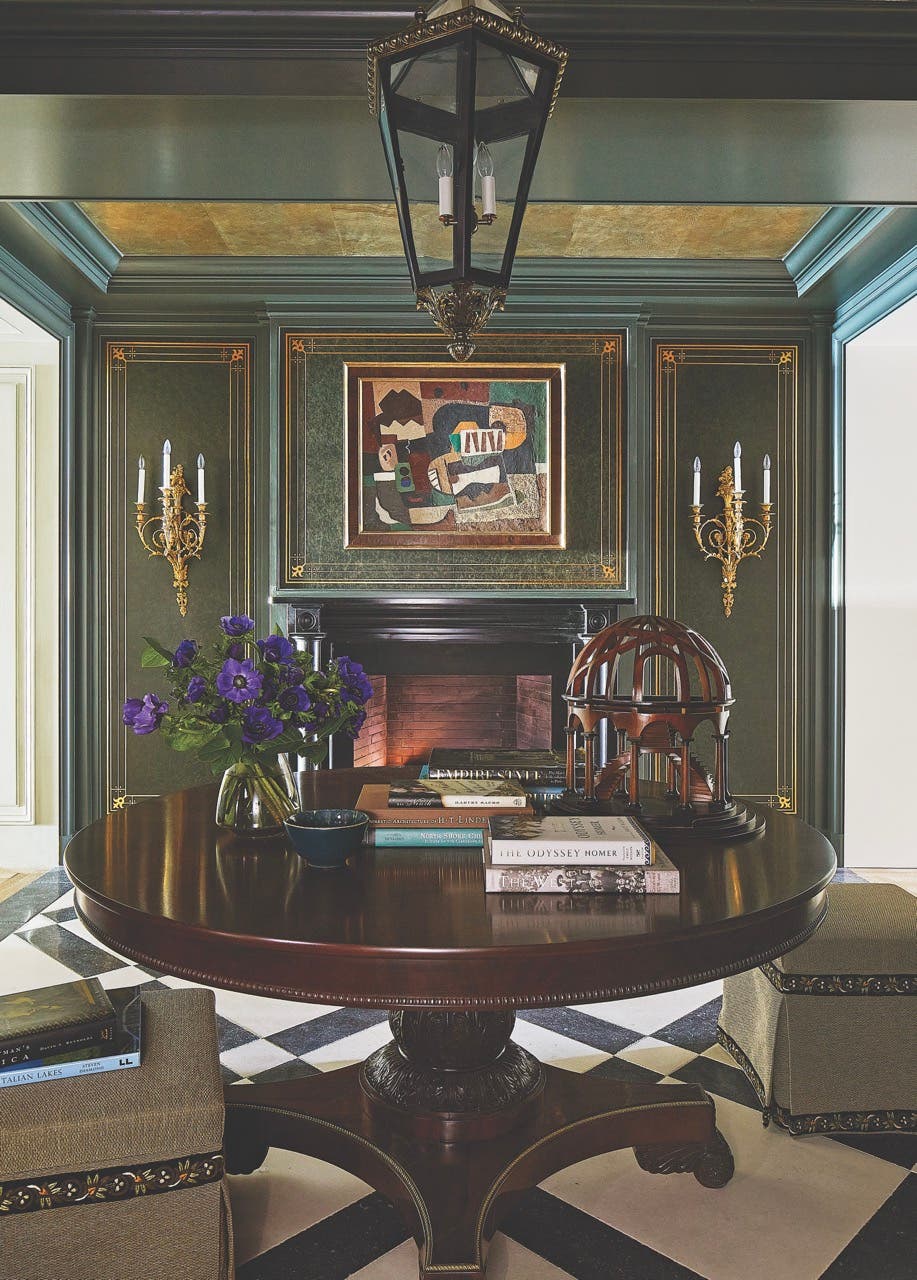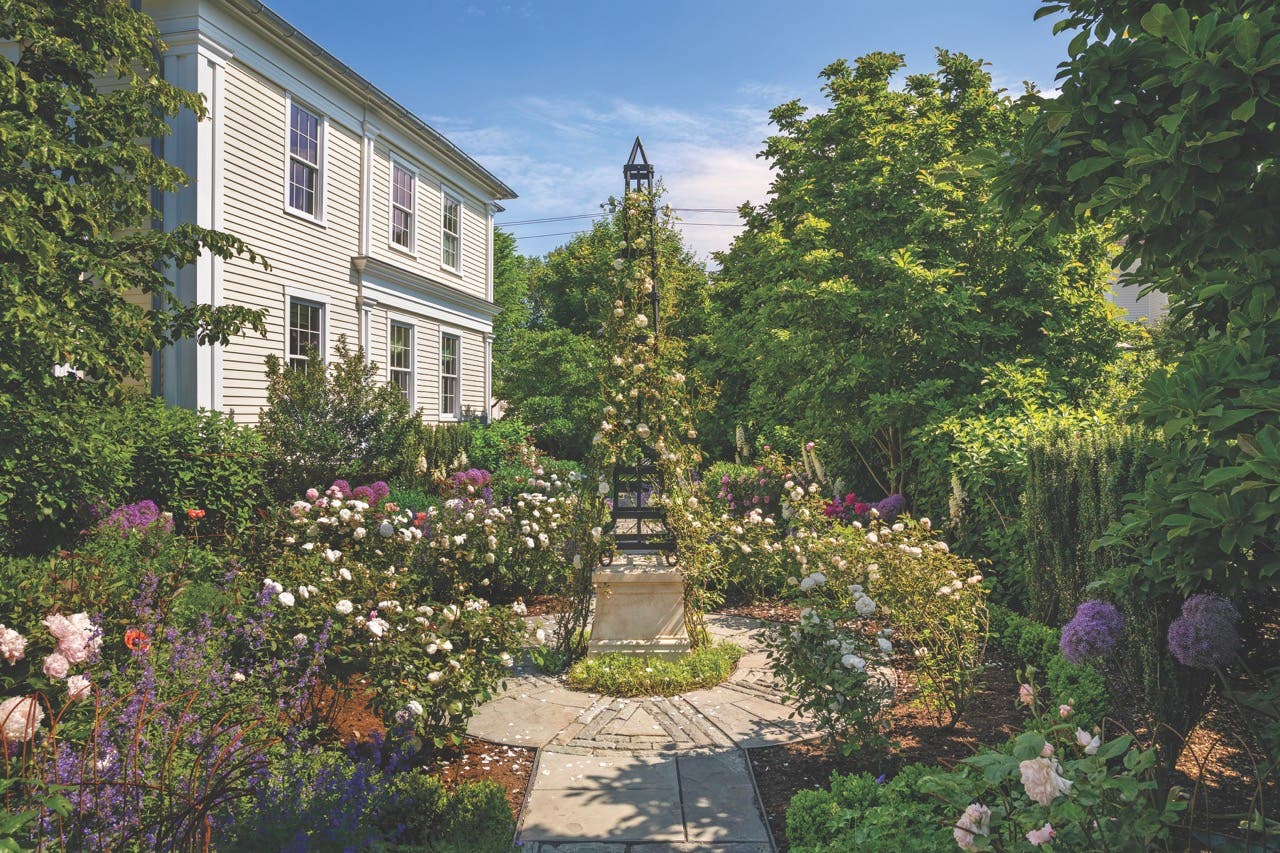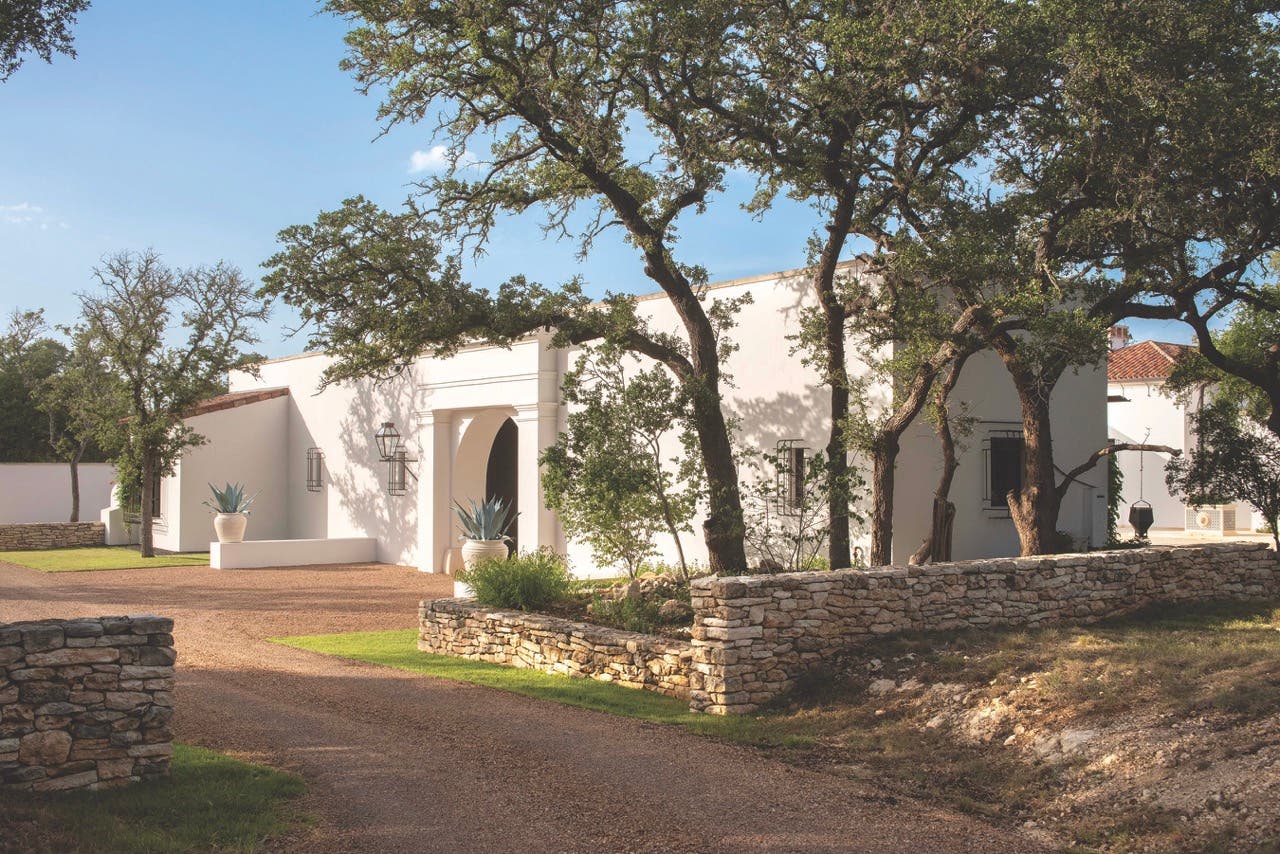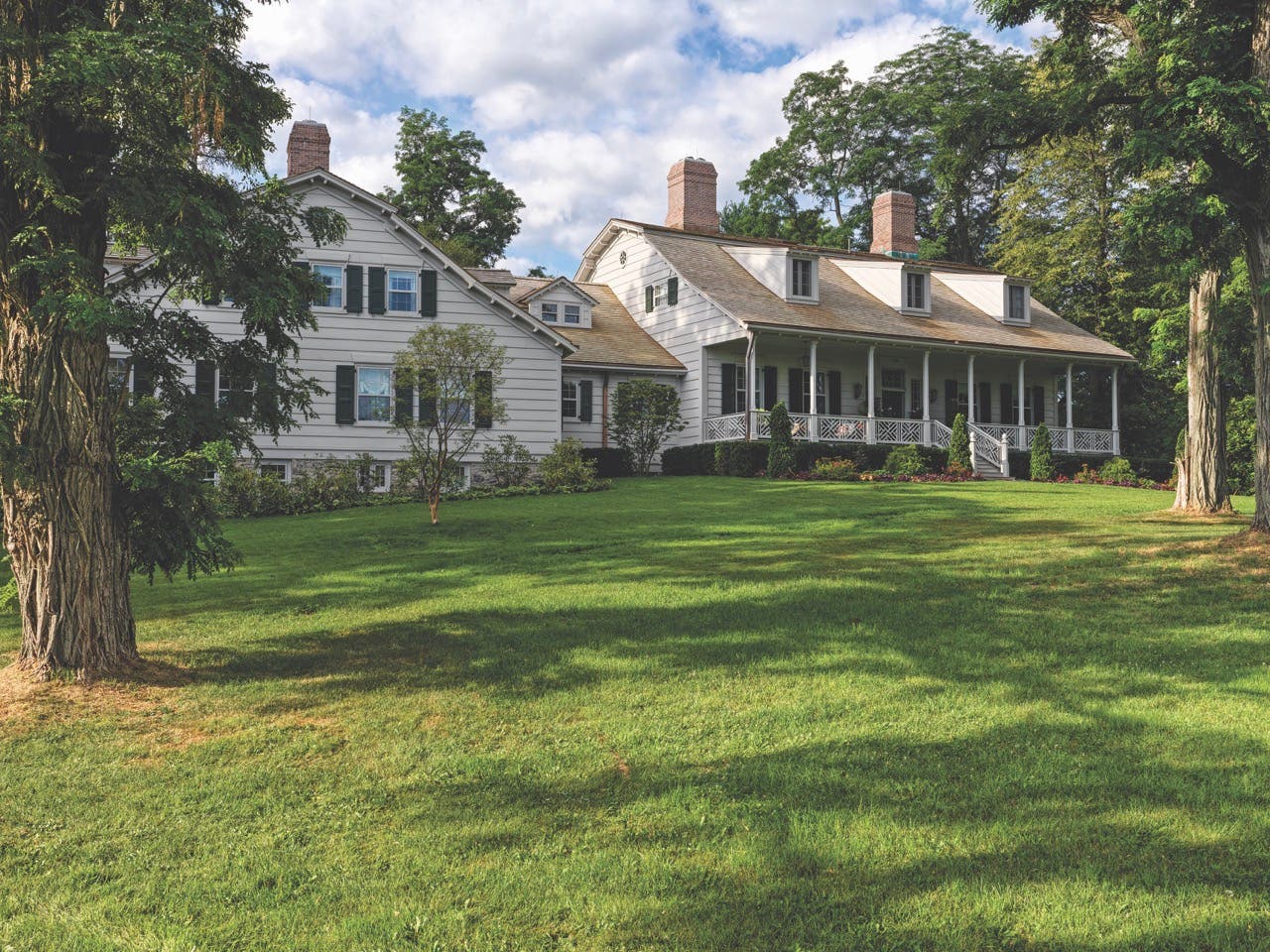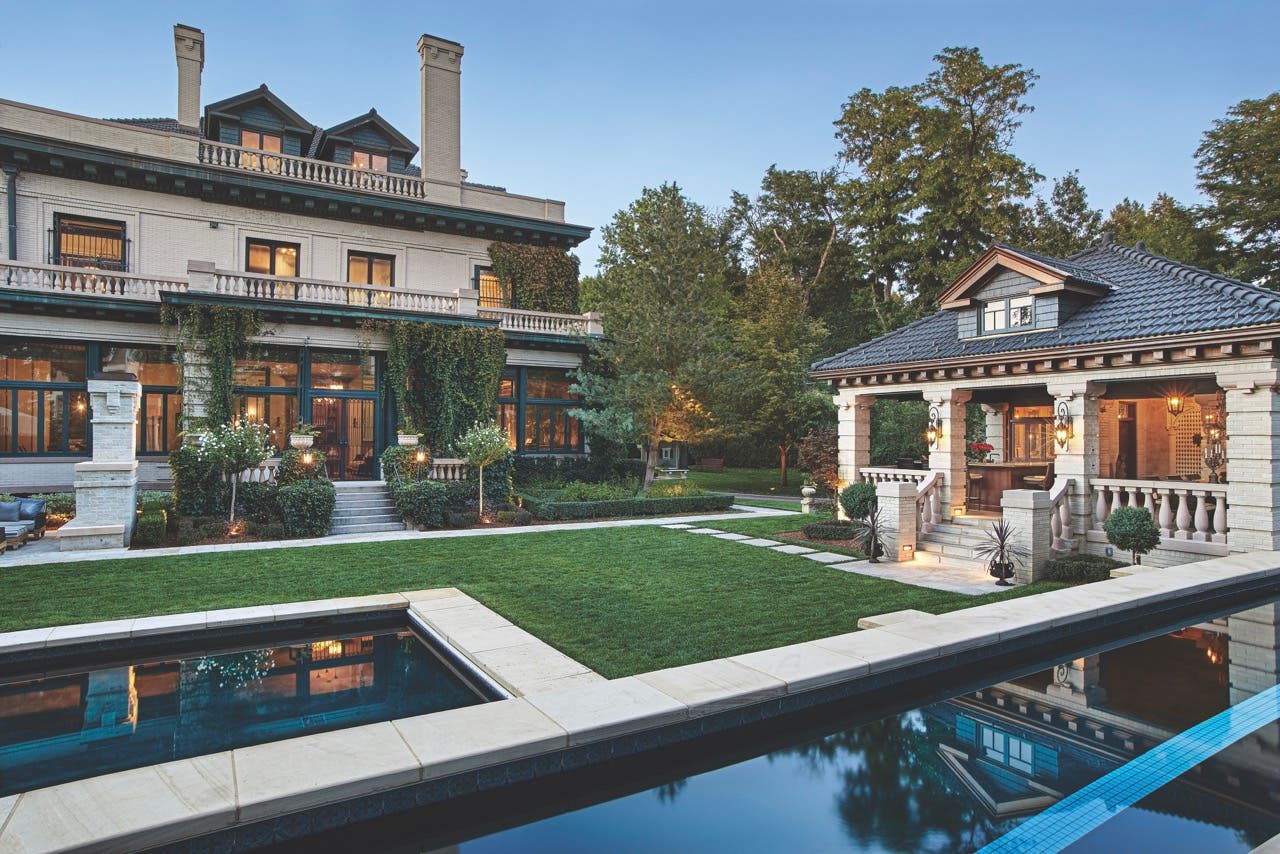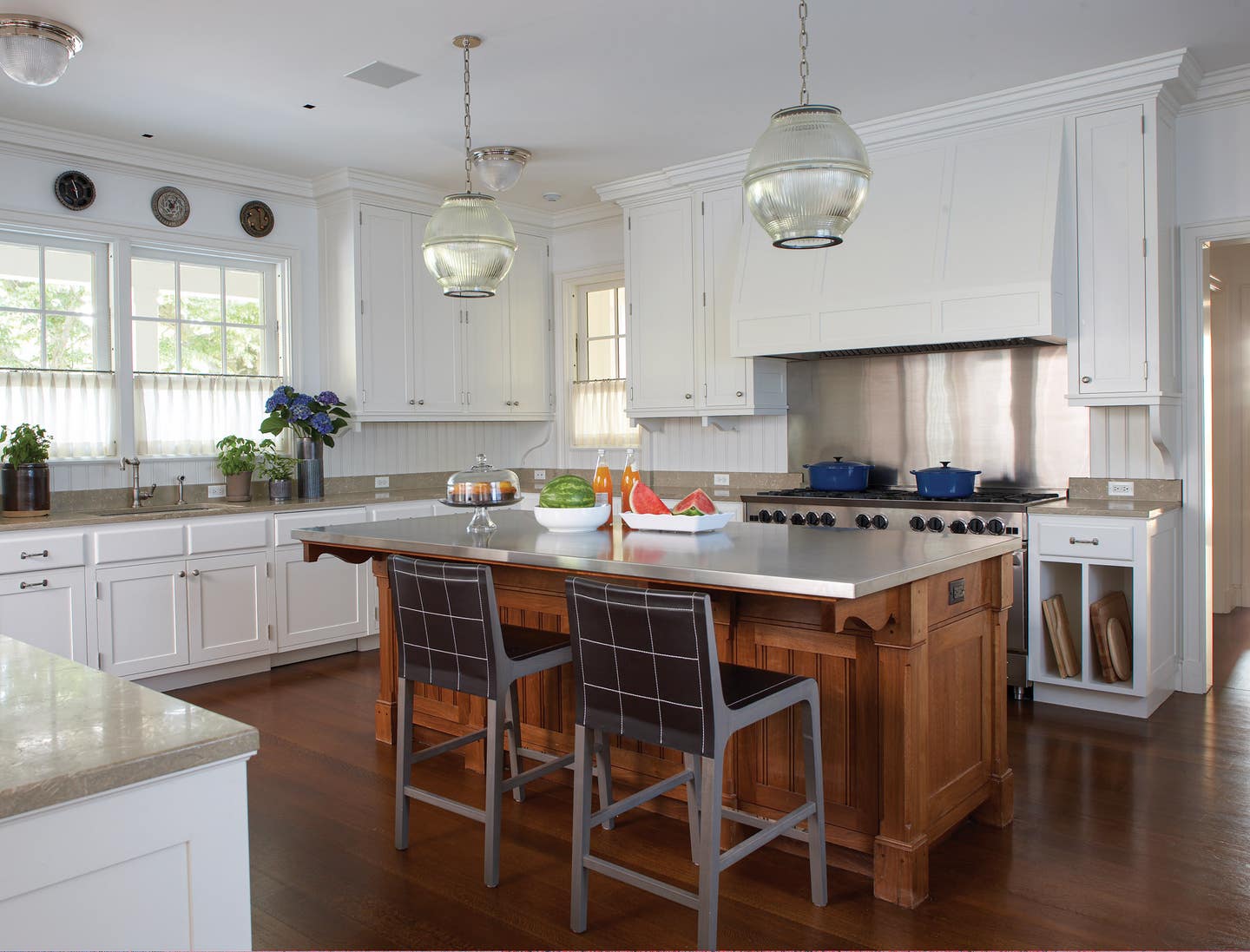
Palladio Awards
Ferguson & Shamamian Architects: Renovations to a Historic Estate
Residential Palladio Winner
Adaptive Reuse and/or Sympathetic Addition
Renovations to a Historic Estate
Ferguson & Shamamian Architects
The new owners of a nearly century-old house in New York’s Westchester County commissioned New York City-based Ferguson & Shamamian Architects to renovate it to fit their modern-family lifestyle without erasing its past.
The 1927 Georgian-style stone house was designed by Delano & Aldrich, the New York City-based early 20th-century Beaux-Arts architectural firm that made a name for itself designing residences for the state’s wealthiest and most powerful players.
It was Delano & Aldrich that designed Kykuit, the Rockefeller family’s Classical Revival estate in Sleepy Hollow; Oheka, Otto Kahn’s colossal castle in Cold Spring Harbor; and the prestigious Knickerbocker Club in Manhattan.
The Westchester County house, which is set on 64 acres, had not been renovated for 40 years and had been vacant for four years before the new owners bought it.
“It’s a beautiful house to start with,” says Oscar Shamamian, partner of Ferguson & Shamamian Architects. “The renovation really was a matter of subtraction.”
The firm renovated the three-story, 15,000-square-foot main house and the pool house inside and outside, retaining and restoring the original moldings, mantels, bathroom vanities and wood flooring. The widow’s walk, which offers stunning views of the Hudson River, was refurbished, and the front-entry court was reorganized in a more formal manner befitting the grandeur of the residence.
Two significant changes—the removal and rebuilding of the service wing and the enlargement of one of the two front gables—seamlessly transitioned the home into the 21st century.
The wing, which was comprised of a 1960s yellow Formica kitchen and a warren of small, low-ceilinged staff and storage rooms, was enlarged and the ceilings heightened to feature a modern kitchen that opens to the family room, a mudroom, a rear family stair, and a two-car garage. They are all connected to a new wrap-around porch facing the rear yard and pool house.
“The rebuilt wing was designed to recall a stone garden wall on its motor-court side,” says Principal Thomas J. McManus, adding that all of its new stone was acquired from the same New England quarry as the original. “It looks like it’s always been there, but it houses all the elements of the new program.”
Principal Stephen T. Chrisman adds that “on the garden side, the wing is much lighter in feel. Clad in wood, with exposed rafter tails, it incorporates the arched trelliswork of the pool house, which was restored to serve a new pool. The enlarged front-façade gable, which is more in proportion with the original house, also created space for a larger upper-floor bedroom and became a more substantial base for the new wing.”
Inside, the firm reconfigured some of the rooms to create larger family-friendly spaces. The indoor swimming pool, for instance, was converted to a games room, and a small bedroom was transformed into a dressing room for the master suite.
The old receiving room, which contained a coat closet, was repurposed as a wet bar adjacent to the living room. The third-floor’s staff and storage rooms were removed to create a large gym, and two bathrooms were added to two existing guest bedrooms.
“The contrast between the heavy stone exterior and the light millwork and panels inside creates a beautiful duality between the richness of the stone and the delicacy of the interiors,” Shamamian says.
The interiors, designed by Ellie Cullman of New York City-based Cullman & Kravis, juxtapose modern furnishings with traditional backgrounds to create light and bright spaces that convey a touch of sophisticated playfulness that reflects the personalities of the owners.
The living room, for instance, retains its original classical-style paneling but is painted white. And the room revolves around the custom billiards table, which is positioned perpendicular to the fireplace.
In the library, whose paneled walls are painted in a light color, one of the bookcases was removed to create an arched door that connects to the dining room. “This is a nod to make the room family friendly,” Shamamian says. “It also makes the room less formal.”
Shamamian says the firm saw its role as rejuvenating the house through a series of small victories—matching the exterior stones, reconfiguring the paneling in the library to accommodate a door, repurposing rooms for modern-day uses, and creating the sympathetic addition. “We felt it was our civic duty as architects to make the renovation perfect and respectful,” he says.
He adds that it has been exciting to see the new owners infuse the historic house with “a new young spirit—and with a wet bar in the living room, and a pass-through in the kitchen.”
Key suppliers
Architect Ferguson & Shamamian Architects (Design Team: Oscar Shamamian, Thomas J. McManus, Stephen T. Chrisman, Justin Ford, Louise LeGardeur, Daniel Hackett, Bryn Tilsley, Arthur Dutton)
Interior Designer Ellie Cullman, Cullman & Kravis
Millwork CJS Millwork Fairfield County Millwork
Exterior Stonework MFA Contracting
Lighting Design Focus Lighting
Hardware Deltana; Katonah Architectural Hardware; Merit Metal
Plumbing Fittings and Fixtures Waterworks; Lefroy Brooks; Newport Brass
Exterior Doors and Windows Century Woodworking
Interior Stone and Tile Anthony Collins
M.E.P. Engineer Consulting Engineering Services, Inc.
Civil Engineers Birdsall Services Group; Langan Engineering
Geotechnical Engineer Heller & Johnsen
Acoustics John Hauenstein



